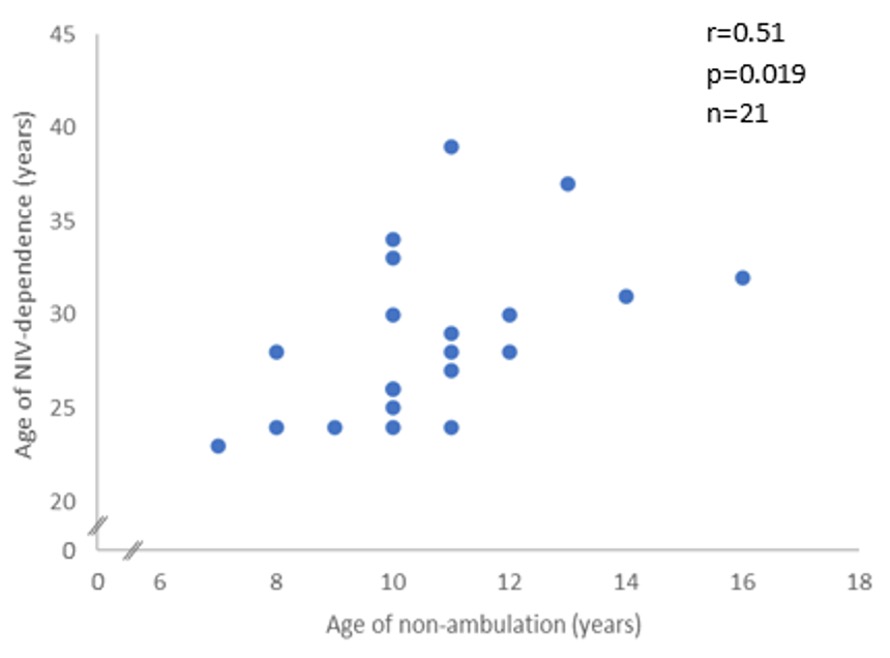Abstract
Background: Previous studies on prognostic indicators in Duchenne muscular dystrophy (DMD) have focussed on childhood cohorts, with lack of data in older cohorts. The role of the genotype also remains unelucidated.
Aim: To determine clinical and genetic prognostic indicators of disease progression in DMD patients.
Methods: Data was collected retrospectively from a cohort of DMD patients between 2020-2022 at a tertiary respiratory centre. Data was reported as median (range). Pearson?s and Mann-Whitney U tests were used for data analysis.
Result: 41 patients were identified, aged 33 (25-47) years. Age to non-ambulation was 10 (8-16) years. All patients were on non-invasive ventilation (NIV) and 70.7% were NIV-dependent. Age of NIV commencement and NIV-dependence were 18 (13-27) years and 28 (23-39) years, respectively. 95% of patients had cardiomyopathy and age of diagnosis was 16 (7-30) years. The age of NIV-dependence correlated with both age of cardiomyopathy (r=0.51, p=0.008) and age of non-ambulation (r=0.51, p=0.019) (Figure 1).

Age of non-ambulation (p<0.05), NIV-dependence (p=0.02) and cardiomyopathy (p=0.01) were lower in patients with multi-exonal than single exon mutations.
Conclusion: The age when ambulation is lost correlates with age of total ventilator dependency, providing empirical validation of the former. Multi-exonal mutations are associated with a worse prognosis.